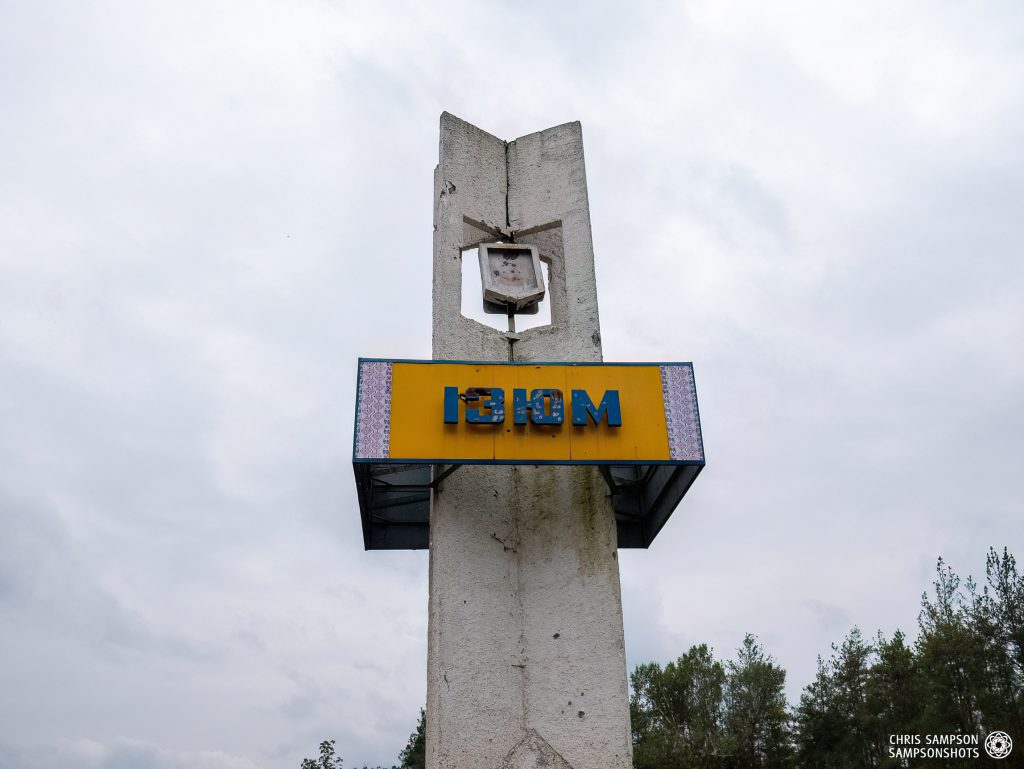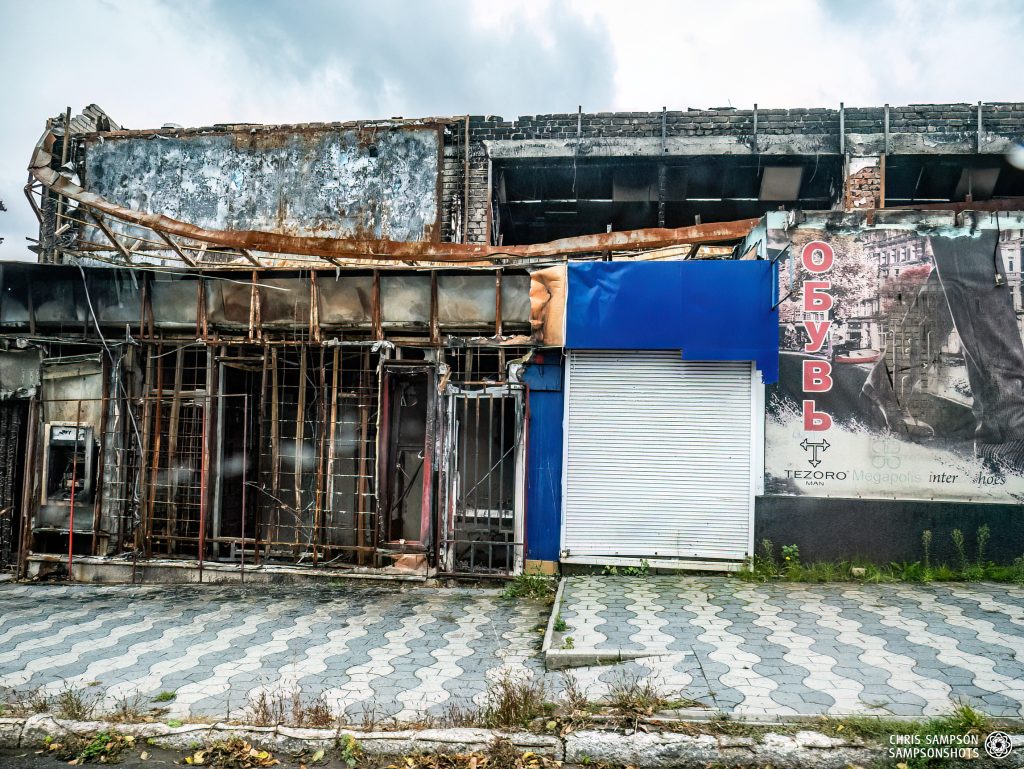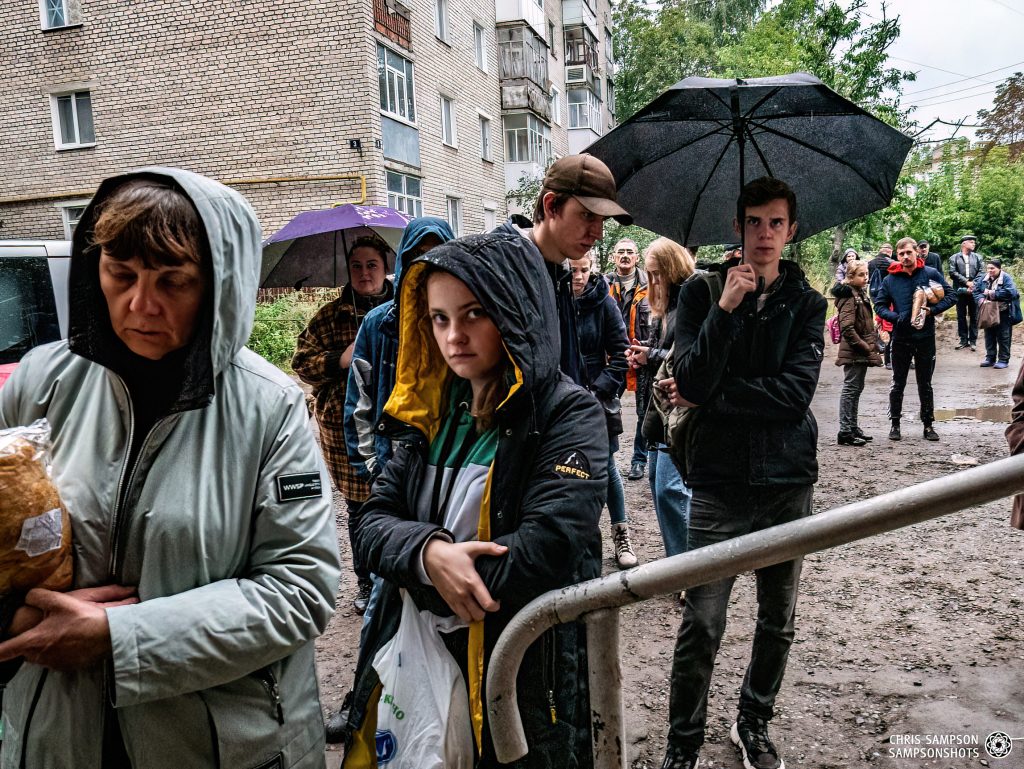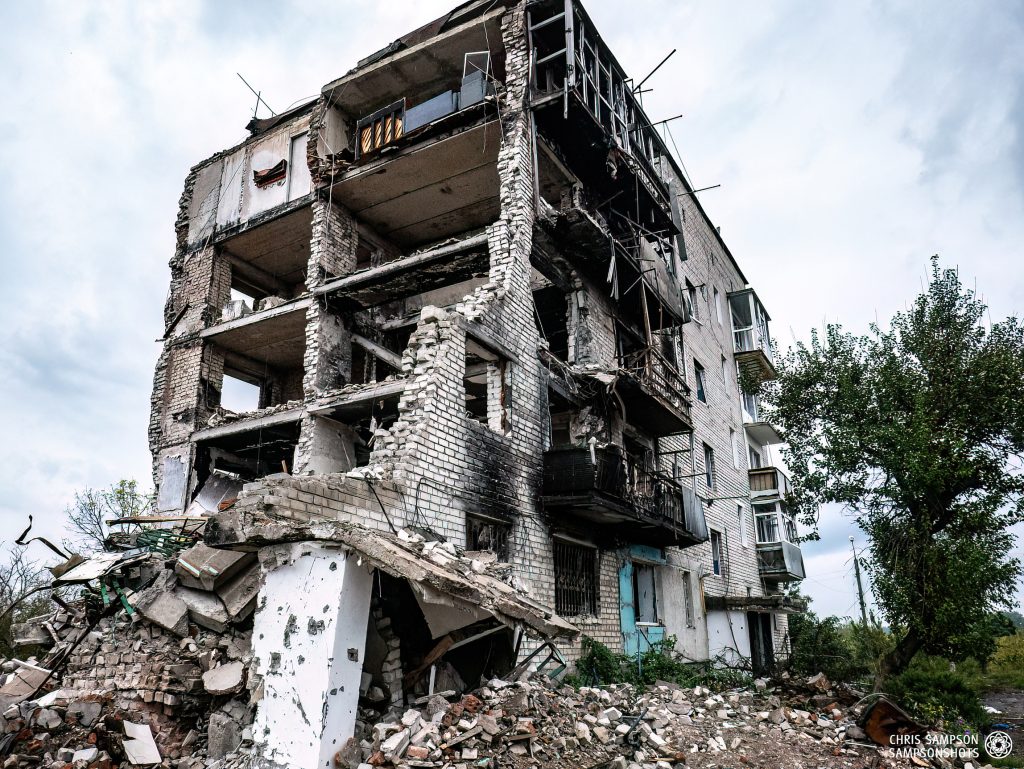In eastern Ukraine, Izyum is a small town around 75 miles from the major city of Kharkiv. Headed down the M03 highway from Kyiv through Kharkiv to the town, our team went to both deliver food supplies to the local population on September 27, 2022, just about two weeks after Ukrainian forces liberated the town from Russian forces. We arrived to a town still in shock from occupation and desperately in need of resources. There was no electricity or running water.
Izyum had been under Russian control from the first week of March 2022 until the counteroffensive launched by the Armed Forces of Ukraine to take back the Kharkiv area towns controlled by Russian forces. During the occupation, Russian forces controlled the information sphere around the local citizens with an effort to shape the narrative that Ukrainian forces were targeting civilians and that Russia was there to protect them. Local citizens told us they were heavily monitored and harassed as they tried to travel around the city and many opted to stay out of sight with hope Ukrainian forces would be successful in recapturing the city.
THIS STORY WAS CREATED BY INDEPENDENT JOURNALISM.
Please consider a donation to fund our mission.
The initial attacks on the town were managed under Lt. Gen. Sergei Kisel, of the 1st Guards Tank Army. According to British Defence officials, Kisel was suspended in May 2022 for failure to capture Kharkiv. Other Russian commanders include Maj Gen. Vitaly Sleptsov of the 144th Guards Motor Rifle Division and Col. Nikolay Ovcharenko, 45th Engineering Regiment. Ovcharenko was killed in Izyum along with 18 of his troops in late March 2022 in an ambush along the Siverskyi Donets River.
As the Russian forces began to take control of Izyum in early March, over 2000 citizens fled to other parts of Ukraine including Svyatohirsk further to the southeast. Shelling and rocket strikes rained down on the citizens of the small town starting February 28th and continued as Russia assumed control of the town. By March 7th, Russia was reporting that it was in control of the town but the fighting would continue as Ukrainian forces worked to help citizens escape. The Russian forces continued to bite into the territory and over the month of March 2022, the two sides battled relentlessly to capture Izyum. As the month went on, Russians repeatedly tried to cross the Siverskyi Donets river and were repelled by the Ukrainian forces. As a result of one of the efforts, Col. Nikolay Ovcharenko, who commanded the 45th Engineer Regiment, was killed along with 19 other Russians.
After the Russians successfully drove their forces further towards Kamyanka, a town to the south of Izyum, it was clear the Russians were in control of Izyum. From this point on, the Russian control of the town solidified enough that even the Russian General Valery Gerasimov would come to Izyum to direct the offensive against Ukrainian forces. Another general who was in the Izyum area, Andrei Simonov, was killed along with at least dozens of other Russian fighters. Simonov was in charge of an electronic warfare unit for the 2nd Army.
Izyum would be a command post for Russian forces as it was on the M03 highway in a strategic position near both Luhansk and Donetsk regions leading towards Kharkiv on one end and Slovyansk on the other. This would be the local reality until September 6, 2022 when the Ukrainian forces launched a profound counteroffensive to drive Russian forces out of Kharkiv. The counteroffensive liberated Izyum on September 10, 2022 and from there another story began, the discovery of mass graves.
In the forests just northwest of Izyum, hundreds of Ukrainian citizens and soldiers were discovered. The locals knew something bad was happening there as many reported to us they heard gunshots at night and the tales of torture chambers in the town were common discussion. As investigators and press descended upon the city, bodies were being exhumed from the forest ground. Just next to Vulytsya Shekspira street, the forests were soon to become marked with tape from the national police as hundreds of bodies were discovered and eventually reburied. Signs of torture were found on many of the victims. They were buried with numbers assigned to log their identities.
Lots of the victims came from the destroyed residential towers along Vulytsya Kharkivska. The buildings were hit by Russian airstrikes which obliterated the centers of two buildings instantly killing dozens of civilians. By the time we arrived on September 27, 2022, the body count for these graves numbered 447, a majority of which were civilians including children and around two dozen Ukrainian soldiers. But then came reports of other mass graves in the area.
We arrived with 200 boxes of supplies and several bags of food items to pass out to the locals in an effort to sustain the people as more aid could arrive. We also interviewed several local citizens about the conditions they lived in under occupation. This included stories of gunshots at night, that they believed were executions. The locals would not go outside during the occupation unless they had to. There were reports of saboteurs working against the Russians. After the residential tower on Vulytsya Kharkivska was attacked, the Russians left the bodies to rot, preventing locals from reacting to the carnage. When they could react, the Russians forced the Ukrainians to do all the work.
Russian forces suppressed outside radio and television signals preventing locals receiving incoming information. The television showed only Russian programming calling themselves liberators. We were told that only the older television sets could receive the signals, newer models could not. The food provided to Ukrainians by Russian forces was minimal and rotten upon arrival. “Two cans of meat, one can of fish” supplied to last a month, each past their shelf life. It was so bad even the dogs wouldn’t eat it.
As a result, the local population would work together to survive. They would fish at the Donets river but be driven away by the Russian forces. They waited patiently for the Ukrainian forces to arrive to free the town from occupation. They would map out the incoming effort in hope of liberation.
Once the Ukrainian forces arrived, the locals were told to avoid tampering with the abandoned Russian equipment, likely for caution that it would be boobytrapped or dangerous.
The need for aid continues. There is no electricity and no running water. We saw few signs of aid organizations during our visit but know the effort will continue.





